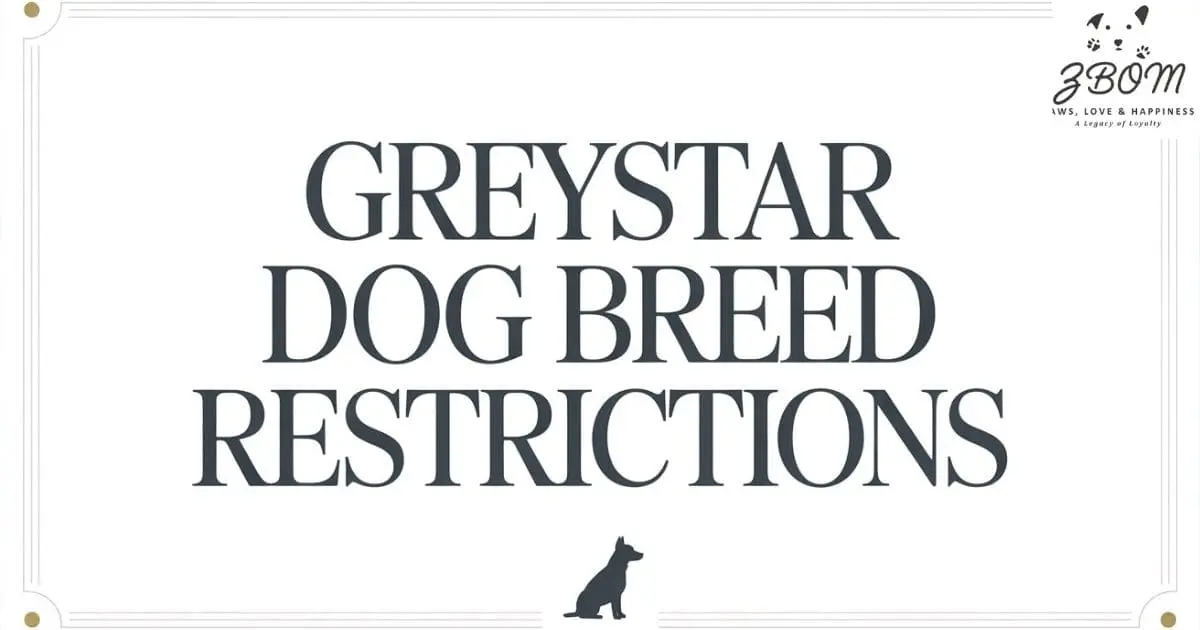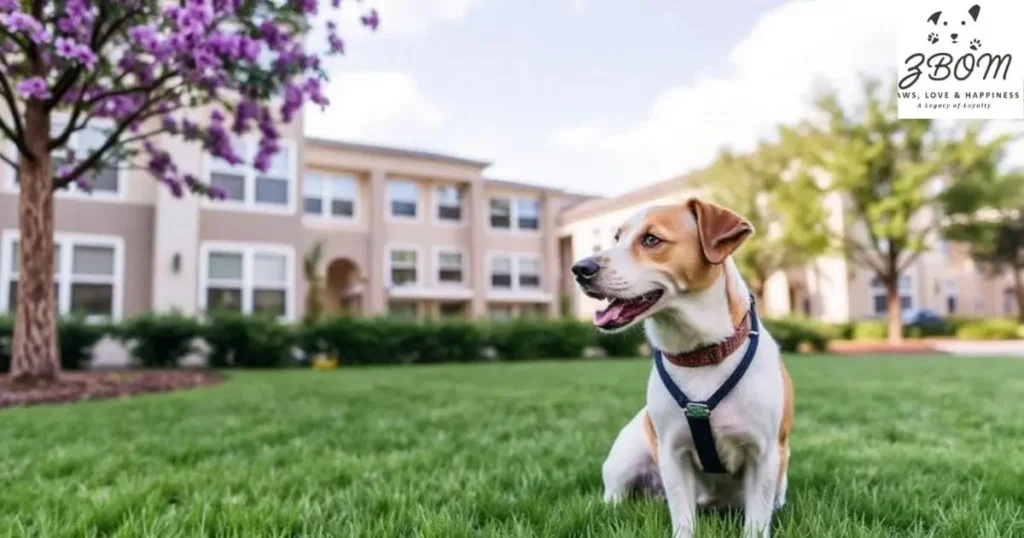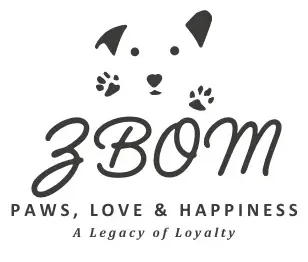
greystar dog breed restrictions
Many dog owners look for rentals that allow pets. Greystar dog breed restrictions knowing the pet policies of companies like Greystar is key.
Greystar’s rules on dog breeds can be tricky. They change based on the property and location. We’ll cover the important parts of their pet policy.
Knowing these rules helps dog owners find the right Greystar apartment. Our guide will help you understand dog-friendly rental rules. This way, you can make smart choices.
Also Read: How To Prepare Ground Beef For Dogs
Short Answer About Understanding Greystar’s Pet Policy Framework
Greystar’s pet policy framework is designed to balance the needs of pet owners and residents without pets. It clearly outlines which types of pets are allowed, any size or breed restrictions, and rules for pet behavior within the community.
The framework often includes guidelines on pet deposits, fees, and responsible pet ownership, ensuring safety and comfort for all residents while accommodating pet-friendly living.
Understanding Greystar’s Pet Policy Framework

Greystar is a top property management company. They have a detailed pet policy framework. It meets the needs of pet owners and keeps the community standards.
Who is Greystar and Their Property Management Approach
Greystar manages many rental communities in the U.S. They focus on making homes welcoming for everyone, including pet owners. They set clear pet policies to keep the community safe and comfortable for all.
Also Read: How To House Train A Pit Puppy
The Importance of Pet Policies in Rental Communities
Pet policies are key in rental communities. They balance the needs of pet owners and those without pets. These policies cover pet size, breed restrictions, and pet fees. Clear policies help keep the community peaceful and avoid conflicts.
How Policies May Vary Between Properties
Greystar has general pet policy guidelines. But, specific rules can change a lot between properties. Things like local laws, property size, and community type can affect these rules.
For example, some Greystar places might welcome dogs more, while others might have stricter rules. It’s important for renters to check the pet policy of each property. This ensures it fits their needs.
Greystar Dog Breed Restrictions: A Complete Guide
Knowing about Greystar’s dog breed restrictions is key for dog owners renting from them. Greystar, a top property manager, has pet policies to keep everyone safe and happy. These include rules on certain dog breeds.
Also Read: Why Is My Husky Shedding In Winter
Commonly Restricted Breeds in Greystar Properties
Some dog breeds are not allowed in Greystar properties because they might be risky or aggressive. These include:
- Pit Bull-type dogs
- Rottweilers
- German Shepherds
- Doberman Pinschers
- Chow Chows
- Wolf hybrids
The breeds banned can change based on where the property is, local laws, and insurance needs.
Weight and Size Limitations
Greystar properties also have rules on dog size and weight. These rules help make sure dogs fit well in the property and don’t harm others.
Mixed Breed Considerations and DNA Testing
Pitbull Behavior Problems, for dogs that are mixed breeds, Greystar looks at the main breed or the breeds that make up most of the dog. Sometimes, they might ask for DNA tests to figure out a dog’s breed mix. This helps them decide if the dog can live there.
Dog owners should tell the truth about their dog’s breed and provide any needed documents. This makes the application process easier.
Why Property Management Companies Implement Breed Restrictions
Property management companies like Greystar have many reasons for breed restrictions. These include insurance worries, possible property damage, and keeping the community safe. They aim to meet pet owners’ needs while ensuring a safe space for everyone.
Insurance and Liability Concerns
Insurance and liability worries are big reasons for breed restrictions. Some breeds are seen as riskier by insurance companies. This can make insurance more expensive or even unavailable.
- Insurance companies often view specific breeds as higher liability.
- Property managers may restrict these breeds to maintain affordable insurance rates.
- Liability concerns drive decision-making around pet policies.
Property Damage Considerations
Pets can damage properties, and some breeds are more likely to do so. This is why property managers might limit these pets.
- Assessing the possible damage is key.
- Some breeds are more likely to cause big damage.
- Restricting certain breeds can help reduce damage.
Community Safety Priorities
Keeping the community safe is a big goal for property managers. Breed restrictions are a way to help achieve this.
- Safety is a top priority for property management companies.
- Breed restrictions can help lower the risk of dog-related incidents.
- Creating a safe community environment is essential.
How to Research Specific Greystar Community Pet Policies

Greystar community pet policies vary. It’s key to check before applying. We must know the pet rules in Greystar properties for a smooth application.
Online Resources and Property Listings
Start by looking at Greystar’s official website and property listings. Greystar dog breed restrictions Many list their pet policies online. This includes breed restrictions, weight limits, and fees.
Search for properties in your area. Then, review the pet policy details.
Also Read: How Much Do Golden Retrievers Shed
Contacting Leasing Offices for Clarification
Online resources are good, but direct contact is often needed. Call or email the leasing office to ask about pet policies. This includes breed restrictions and extra fees.
This ensures we get the latest and most accurate info.
Questions to Ask Before Applying
Before applying, make a list of questions for the leasing office. Ask about breed restrictions, weight or size limits, pet deposits, and monthly rent. Also, ask about any extra pet requirements.
These questions help us understand the pet policy. Greystar dog breed restrictions This way, we can choose a pet-friendly housing option that fits our needs.
Preparing Your Pet Application for Greystar Properties
To make the pet application process for Greystar properties smooth, preparation is key. We need to know what documents are required and how to present them. It’s also important to create a pet resume and gather references.
Also Read: Can I Use Human Hair Conditioner On My Dog
Required Documentation and Forms
First, we must collect the necessary documents for the pet application. These include:
- Proof of vaccination and up-to-date veterinary records
- Spay or neuter certification
- Licensing information
- Any additional forms specified by the Greystar property management
Having all these documents ready will make the application process easier.
Creating a Pet Resume
A pet resume is a great way to showcase our pet’s background and health. It should include:
- Our pet’s breed, age, and weight
- Training and behavioral information
- Veterinary references
- Any notable achievements or certifications
Gathering References and History
References from previous landlords and veterinarians can also help our application. They provide more information about our pet and our responsibility as owners.
Also Read: Best Brush For German Shepher
Previous Landlord Statements
Statements from previous landlords offer insights into our pet’s behavior and our responsibility. We should ask for a letter that includes:
- Information about our pet’s behavior and any incidents
- Confirmation of timely rent payments
- Any other relevant details
Veterinarian References
Veterinarian references are also helpful. They can confirm our pet’s health and well-being. We should ask our vet for a letter that includes:
- Our pet’s medical history
- Information about any health issues or concerns
- Confirmation of up-to-date vaccinations and preventatives
Schnauzer Summer Cut, By preparing well, including all necessary documents, a detailed pet resume, and relevant references, we can improve our chances of a successful application to Greystar properties.
Navigating the Pet Approval Process
If you want to move your pet into a Greystar community, knowing the approval process is important. We’ll help you through the steps for a smooth experience.
Step-by-Step Application Procedures
The pet approval process at Greystar is easy to follow. Here’s what you need to do:
- Submit your pet application with the needed documents, like vaccination records and a pet resume.
- Make sure your pet fits the breed and size rules of the Greystar community you’re interested in.
- Pay any pet fees, which might include deposits or non-refundable charges.
Breed Verification Methods
Greystar checks your pet’s breed in different ways, including for mixed breeds. They might:
- Look at breed-specific documents.
- Do DNA tests for mixed breeds to see if they have restricted breeds.
Timeline Expectations
The time it takes to get approved can vary. It depends on how complex your application is and the Greystar community’s rules. Usually, it takes a few days to a week. It’s good to apply early to not delay your move-in.
Can You Shave A Husky, By knowing and following these steps, you can easily go through the Greystar pet approval process. This way, you and your pet can enjoy your new home.
Options if Your Dog is on the Restricted List

If your dog is on Greystar’s restricted list, don’t worry. There are ways to keep your pet by your side. We’ll look at options to help you.
Requesting Policy Exceptions
One way is to ask for a policy exception. Talk to the property management or leasing office. Be ready with proof of your dog’s good behavior or training.
Providing Additional Documentation
More documents can help your case. This might include:
- Certificates of obedience training
- Veterinary references
- Proof of spaying/neutering
Showing your dog’s good behavior and your care can convince them to make an exception.
Also Read: How To Cool Down A French Bulldog
Finding Alternative Greystar Properties with Different Policies
If you can’t get an exception, look for other Greystar places. Greystar has many properties, and some welcome pets more than others. Look at different Greystar communities’ pet policies to find a better fit.
Knowing Greystar’s pet rules helps you choose the right place for you and your dog.
Understanding Emotional Support Animal Accommodations
Having a furry friend in a Greystar property can be special. It’s important to know the difference between pets and emotional support animals (ESAs). ESAs help people with mental or emotional issues and are protected by fair housing laws.
ESA vs. Pet Classification Differences
ESAs and pets are different in many ways. Pets are just friends, but ESAs are vital for people with disabilities. This difference affects the rights and duties of both the resident and Greystar.
Knowing this difference helps you follow Greystar’s rules and fair housing laws.
Also Read: Why Does My Frenchie Keep Throwing Up
Required Documentation for ESA Approval
To get an ESA in a Greystar property, you need certain papers. You must have a letter from a doctor. This letter should say you have a mental or emotional issue and need the ESA to help.
The papers must be up-to-date and meet Greystar’s needs for ESA approval.
Greystar’s Approach to Fair Housing Requirements
Greystar follows fair housing laws closely, including those for ESAs. We see ESAs as a needed help for people with disabilities, not just pets.
We help residents by understanding their needs. We make sure to provide the right accommodations as the law requires. This makes our community welcoming for everyone.
Financial Considerations for Dog Owners

When you apply for a Greystar property with your dog, you need to think about money. It’s important to know the costs so you can plan your budget.
Pet Deposits and Non-Refundable Fees
Greystar places often ask for a pet deposit. This amount can change based on the community and your pet. Some places also have non-refundable pet fees.
- Pet deposits usually cost between $200 and $500
- Non-refundable fees might be a one-time payment or yearly
- Some places offer pet damage insurance instead of deposits
Monthly Pet Rent Structure
Many Greystar communities have a monthly pet rent. This is extra money on top of your regular rent.
- Monthly pet rent can be from $25 to $100 per pet
- The cost depends on how many pets you have and the community’s rules
Additional Costs to Consider
There are more costs to think about beyond the initial deposits and monthly rent.
- Pet-related amenities or services, like dog parks or grooming stations
- Possible damages or repairs from pets, not covered by the deposit
- Pet insurance, which is a good idea for dog owners
Knowing these financial points helps dog owners find a Greystar property that fits their budget and needs.
Moving Between Greystar Properties with Your Dog
When you move your dog to a new Greystar property, knowing their rules is key. It can be tough to figure out these policies, but knowing them helps a lot.
Transfer Policies for Existing Pet Approvals
It’s important to know how Greystar handles pet approvals when you move. They might keep your pet’s approval, but it depends on the property and their rules.
- Contact the leasing office of both your current and prospective properties to discuss transfer options.
- Provide documentation of your previous pet approval to facilitate the transfer process.
- Understand any changes in pet deposit information or monthly pet rent between properties.
Regional Differences in Pet Policies
Greystar has properties all over, and their pet rules can change a lot. For example, some places might not allow certain breeds or have weight limits.
To make the move easy, check the pet rules of your new place. Look at approved dog breeds and pet deposit info.
Reapplication Requirements
At times, you’ll need to apply again for pet approval, even if you already have it. This is more likely if the new place has different rules. You’ll need to show updated vet records or references.
- Review the pet policy of your new property to understand their specific requirements.
- Gather necessary documents, including updated vaccination records and a new pet resume if needed.
- Submit your reapplication and wait for approval before bringing your dog to the new property.
Knowing Greystar’s rules for moving, pet policies, and reapplying helps a lot. Always check for the latest pet policy updates to stay up-to-date.
Preparing Your Dog for Apartment Living
To make sure your dog is happy in Greystar communities, it’s important to prepare them for apartment living. This preparation makes your dog’s life better and helps everyone in the community live in peace.
Training Recommendations for Community Living
Training is key for your dog to adjust to apartment living. Teaching them basic commands like “sit,” “stay,” and “quiet” helps keep the peace. We suggest training classes that teach your dog to be quiet and respectful to neighbors.
- Enroll in obedience training classes
- Practice noise reduction techniques
- Focus on commands that promote calm behavior
Socialization Tips for Multi-Family Environments
Socializing your dog is essential for them to fit in with the community. Exposing them to different people, dogs, and sounds helps them stay calm. We recommend regular walks, dog park visits, and inviting friends over to socialize your dog.
- Take regular walks around the community
- Visit dog parks to interact with other dogs
- Host gatherings to socialize your dog with different people
Exercise Solutions for Limited Spaces
Even with small spaces, there are many ways to keep your dog active. Indoor games like fetch and hide-and-seek, and climbing stairs are great options. Also, using nearby parks for longer walks or runs is a good idea.
- Engage in indoor games like fetch or hide-and-seek
- Utilize stair climbing for exercise
- Visit nearby parks for longer walks or runs
By focusing on training, socializing, and creative exercise, your dog can thrive in a Greystar apartment. This benefits your pet and makes the community a better place for everyone.
Being a Responsible Dog Owner in Greystar Communities
Being a dog owner in a Greystar community means you have big responsibilities. Greystar places are great for pets, but you must follow certain rules. These rules help keep everyone happy and safe.
Following Community-Specific Pet Rules
Every Greystar community has its own pet rules. These rules might limit dog breeds, sizes, and weights. They also might ask for pet registration and vaccination records. Knowing these rules is key to being a good dog owner.
Some Greystar places don’t allow certain dog breeds. So, it’s important to check the pet policy before bringing your dog. This helps keep the community peaceful for everyone.
Proper Use of Designated Pet Areas
Greystar communities have special pet areas like dog parks and trails. Using these areas right is important. It means cleaning up after your pet and keeping them on a leash.
Neighborly Etiquette for Pet Owners
Being a good dog owner also means thinking about your neighbors. Keep the noise down and don’t let your dog bother others. Being respectful of shared spaces is also important.
By following Greystar’s pet rules and being considerate, you make your community a better place. Being a responsible dog owner is essential for enjoying the perks of Greystar’s pet-friendly apartments.
Advocating for Policy Changes
Changing Greystar’s breed restrictions is a challenge, but it’s doable. As dog owners and renters, we can make a difference. We can push for more welcoming policies by understanding and talking about Greystar’s pet rules. This way, we can help make Greystar communities more dog-friendly.
Communicating Effectively with Property Management
Good communication is essential when asking for policy changes. We should first learn about Greystar’s breed restrictions and why they exist. Then, we can talk to property management in a respectful and informed way. This can help us suggest better options for everyone.
Organizing with Other Pet Owners
Working together with other pet owners can make our voices louder. By sharing our stories and worries about banned dog breeds at Greystar, we can build a strong case for change. This teamwork can lead to a deeper look at Greystar’s pet policies.
Proposing Reasonable Alternatives to Breed Restrictions
Instead of focusing on dog breeds, we could look at dog behavior and owner responsibility. We could suggest things like dog training, higher pet deposits, or regular checks to follow community rules. By sharing smart ideas, we can help make Greystar communities safer and happier for all.
Conclusion
Knowing about Greystar’s dog breed restrictions and pet policies is key for dog owners looking for rentals. Being aware of the greystar dog breed restrictions and pet policy greystar apartments ensures a smooth rental experience. Greystar’s rules differ by property, so it’s important to check the specific community rules.
When looking for a dog-friendly rental, consider the dog-friendly rental restrictions and restricted dog breeds in greystar properties. This helps avoid problems during the application. We’ve outlined how to navigate these restrictions and find a good property for you and your pet.
By staying informed and prepared, you can have a hassle-free rental experience with your dog. Understanding Greystar’s pet policies helps you make smart choices. This way, you can find the perfect home for you and your pet.
FAQ
What dog breeds are typically not allowed in apartments?
Landlords often place restrictions on dog breeds like Rottweilers, Pit Bull Terriers, and Doberman Pinschers due to aggression or damage risks.
What breed of dog is uninsurable?
Insurance companies often blacklist dog breeds like pit bulls, rottweilers, Doberman pinschers, and German shepherds, with restrictions by providers.
Do hotels have restrictions on dog breeds?
Pet-friendly hotels often allow dogs only, with size and breed restrictions. Policies vary by hotel brands, and pets can’t be left unaccompanied.
Can landlords restrict dog breeds?
Landlords can restrict aggressive breeds like pit bulls, Boxers, AmStaffs, Rottweilers, Dobermans, and Chows unless the dog is a trained service animal.
Does Airbnb have dog breed restrictions?
Airbnb hosts set pet rules for dogs, with restrictions on heavy shedders or active breeds under specific breed policies.




